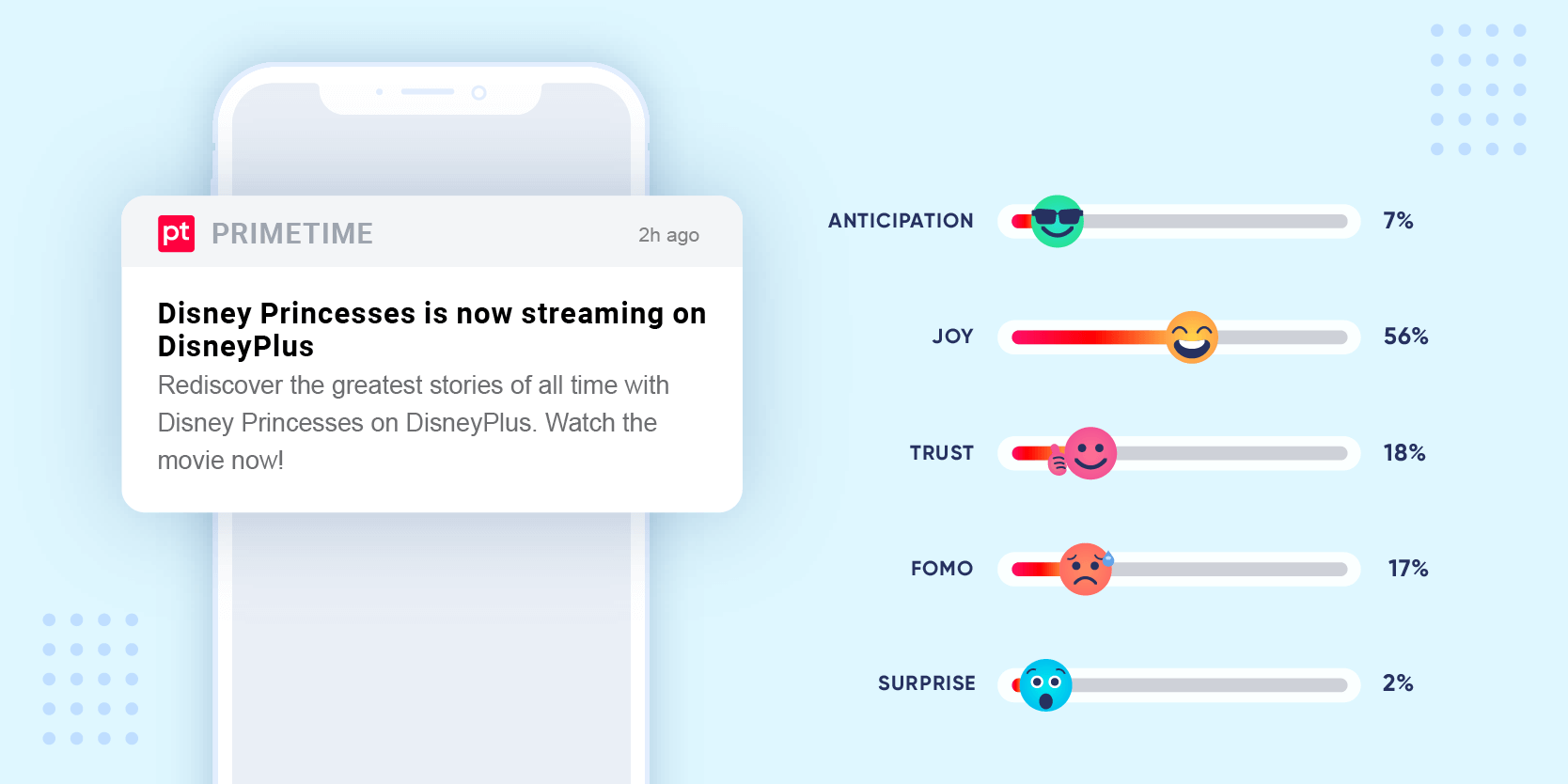How do you capture a customer’s attention?
The answer is emotion. According to a study by Harvard Business Review, the LTV of emotionally connected customers is more than twice that of even highly satisfied customers.* They engage more, buy more, show less price sensitivity, and recommend your brand more often.
Inspired by how emotions drive behavior, we’ve developed a new tool to help marketers gain insights on emotions in the campaigns they’re sending out. Our tool will provide marketers the ability to analyze and adjust the emotional tone of messaging to effectively engage users.
Try the tool for free here.
Why We Focused on Emotions
The inspiration for this new tool was initially drawn from the work of Dr. Daniel Kahneman — renowned psychologist, economist, and author of Thinking Fast and Slow — who suggests that there are two thinking modes that coexist in our minds:
- System 1 leverages impulse and is the type of fast, automatic, emotional thinking that often happens without effort or conscious control.
- System 2 uses the slow, logical, calculating reasoning that applies beliefs and logical analysis before taking action.*
When our data science team led the brainstorming sessions that resulted in this tool, the conditions of the world were much different. However, the hypothesis and challenge we were looking to solve was similar: can businesses create more value if they center their campaigns and messaging around core human emotions? Our data science team soon discovered the answer was yes.
CleverTap was built to advance meaningful, long-lasting relationships between digital businesses and their customers. Our team accelerated the timeline to release our emotion analysis tool outside of the platform since the emotional aspect of messaging is a critical component to every campaign, especially today. Understanding emotions can make messages more relevant given the stressful circumstances we’re all experiencing.
How Can AI Interpret Emotions?
We’re launching an emotion analysis tool that uses psychology, data science, and AI to understand what emotions are present in messages, such as: surprise, joy, trust, anticipation, even FOMO (fear of missing out).
As businesses are in an ongoing state of crisis communications, it’s crucial to exhibit trust. While pre-crisis messaging could drive results with anticipation and FOMO for a limited time offer, messages in this climate need to convey trust with empathetic content relating to the current circumstances, offering relevant solutions and showing business continuity. In essence: “The world is changing, but you can still rely on us.”
We built our emotion analysis tool based on Dr. Robert Plutchik’s Emotional Wheel, emphasizing eight primary emotions, and 24 derivative emotions. Our tool is able to recognize emotions, and serve as a guide to balance and improve your existing messaging. One of our capabilities, for example, can analyze what primary emotions are being conveyed in a message, and an idea of the impact on CTRs based on historical campaign data. CleverTap invented this tool so content creators can gain insight into how their messaging might make a customer feel, and receive suggestions to optimize for better resonance.
Emotions can be analyzed and, ultimately adjusted, even if you manage hundreds of campaigns with thousands of messages. The unique combination of CleverTap’s AI capabilities and Google’s OpenSource BERT* — a neural network-based technique — allows our tool to associate emotions with individual words and whole sentences.
Our emotion analysis specifically focuses on measuring the emotions most commonly used by marketers: surprise, joy, trust, anticipation, and FOMO. We purposely removed measuring anger, sadness, and disgust, as these are minimally leveraged in marketing messages. (And if you’re using these emotions in your campaigns, we suggest you browse our article on relationship marketing.)
The tool measures and provides a distribution of the emotions present in your marketing messages: surprise, joy, trust, anticipation, and FOMO.
In addition to emotion analysis, teams will have access to other types of analytics tools to identify which marketing messages are resonating best with your audience.
What’s Next?
Throughout 2020, we have been challenged to reevaluate how we plan, how we interact with customers, and how we run our businesses. The plans we initially laid for 2020 are no longer applicable, and our organizations now must find new ways to connect with users. Our goal is to help you skillfully navigate these communication challenges.
We look forward to hearing more about how you use emotions to connect meaningfully with your customers.
Try the tool for free here.

See what the power of this feature can do for your business.
Mrinal Parekh 
Leads Product Marketing & Analyst Relations.Expert in cross-channel marketing strategies & platforms.
Free Customer Engagement Guides
Join our newsletter for actionable tips and proven strategies to grow your business and engage your customers.















































